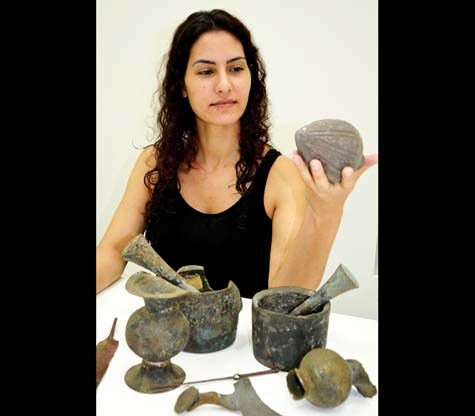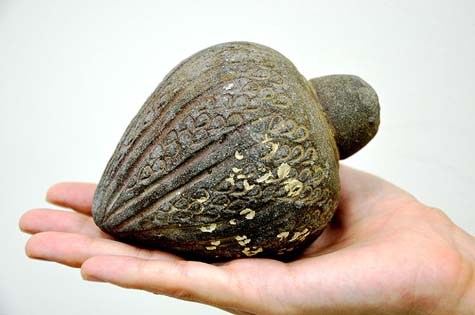
PHOTO: jewishpress.com
A cache of metal artifacts recovered from the ocean has been recently uncovered by Israeli antiquities authorities. Among them – a hand grenade dating back to the Byzantine era, a toggle pin, the head of a Middle Bronze Age knife, two mortars and two pestles, and fragments of candlesticks. While it may not seem like much, the archaeologists believe this find is crucial in understanding the history of the Early Islamic Period in Syria. Why? Well, that answer lies with where the cache was found.
This year, an Israeli family called the Mazliah family, from Givatayim, Israel, were surprised to find this treasure trove of ancient artifacts as part of their inheritance when their father, a power station worker, passed away.
He had, apparently, retrieved these items from the sea while he was working at the power station. The family had a look at the artifacts and thought they appeared to be pretty ancient, so, just in case, they contacted the Israel Antiquities Authority and alerted them to the find.
The IAA sent a couple experts down to review the artifacts, and were surprised to find a series of decorated metal objects in good condition. It seems that the items were originally manufactured in Syria and were then shipped to Israel by a metal merchant during the Early Islamic Period.
Ayala Lester, a curator with the IAA says, “The finds are evidence of the metal trade that was conducted during this period.”
Perhaps the most enigmatic and surprising member of the find was the ancient hand-grenade. We traditionally think of these types of weapons as belonging to twentieth century and beyond, but actually, the first hand grenades came along with the invention of Greek Fire, in the AD 600s.Greek Fire was an incendiary weapon created by the Byzantine Empire for use in naval battles. The actual composition of the weapon has been lost to time, but what we do know about it was that it was extremely combustible, burned on water and, in some interpretations, was even ignited by water, and was accompanied by “thunder” and “much smoke”. It was a liquid substance, not a projectile.
By the AD 700s, Byzantine soldiers had begun to fill stone and ceramic jars with the combustible liquid, using them as hand grenades in battles. Later, they would eventually switch to breakable glass containers that would explode on use.
Later this year, the Mazliah family will receive a certificate of appreciation for their contribution from the IAA. They’ve been invited to tour the IAA’s laboratories, where their late father’s cache of ancient artifacts are currently being treated and cataloged.


